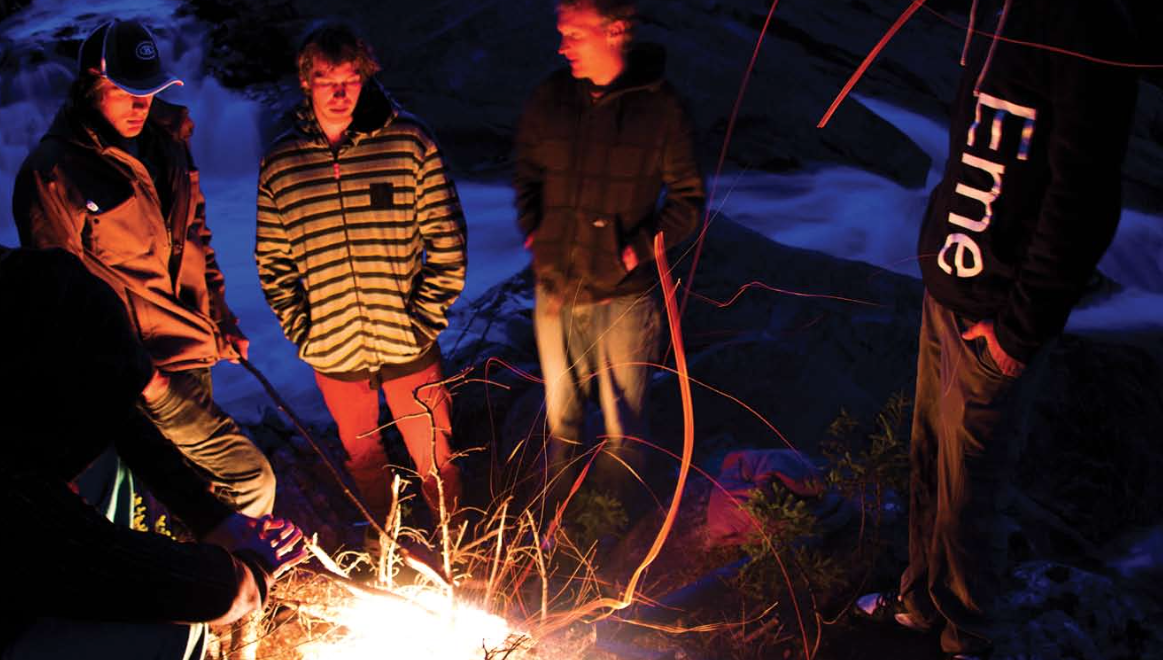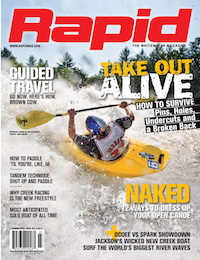River gauges this spring recorded unseasonably low water in the Northeast but that didn’t stop a dedicated band of professional kayakers from launching themselves on a single-minded mission that’s become an annual tradition: the quest for the world’s largest surfable river wave.
Stakeout, as this quest has come to be known, originated in 2000 when Marlow Long and I got our first taste of mammoth waves on the Ottawa’s Bus Eater. This wave was unlike anything we’d ever surfed and we were confident that if we scoured the countryside, we could find more like it. Aided by Google Earth, our expanded search started the following year in Quebec, exploring the high volume rivers that cover this region. We soon discovered many rivers with potential but without adequate flows, and so the wait—and our stakeout—began.
Hunting giant waves requires keeping your eye out for potential, watching levels and hustling to the rivers as they start to spike. Each spring, the monsters awake with the thaw as the banks.
Hot on the trail, our group—an international crew including Ben Marr, Rush Sturges, Steve Fisher, Joel Kowalski and B.C. Boys Logan Grayling, Micah Lyall and brothers Max and Dylan Davidson—piles into sagging RVs and questionable motels along the backroads of Quebec.
The province has rewarded us with some of the world’s best river waves and ample opportunity to progress freestyle kayaking. Giants like Black Mass, Detonator, Sirens, Half Mast, Ginormica, Biggie and Gladiator have been discovered on Stakeout, making the long drives, excessive flat- water, unavoidable bendering and general mayhem that comes with a group this size entirely worthwhile.

STAKEOUT GOES DOWN UNDER
While the search continues in Quebec, others have taken the cause to more distant lands.
In February, a team led by freestyle icon Anthony Yap headed deep into Western Australia’s isolated Kimberly region during cyclone season on a month-long, self-supported expedition in hopes of finding monsoon-swollen river waves. While the skies stayed clear and the river low during the expedition, the crew remains undaunted.
“The Kimberley has amazing potential,” says Yap. “Huge monsoonal downpours, rapidly fluctuating river levels and some amazing rapid forma- tions have left me convinced that there are epic waves out there—we’ll continue the search until we find them.”
Much of what drives Stakeout and other wave- finding missions is the fact that there are so few known big-river waves suitable for freestyle. Their formation takes a certain unique set of circum- stances. High volume rivers are the best bet for giant waves but adequate gradient and the right riverbed topography are necessary as well. A decade of experience has shown the best waves— those with good shoulders and larger surfable windows—to form off slanted shelves. Fast, unaerated water and some slower water behind the wave to back it up combine at the best spots.
Given all the critical elements in play, there are perhaps only 15 world-class big waves around the globe and most run for only a few short periods throughout the year. So where will the quest for these elusive giants take big wave explorers in the years to come? China and Russia show promise—both have vast areas with high volume rivers as yet untapped for freestyle. And the Stakeout crew has a top-secret list of drainages that should keep the dépanneur Red Bull and diesel flowing for many cold Mays to come.
 This article first appeared in the Summer/Fall 2010 issue of Rapid Magazine. For more great content, subscribe to Rapid’s print and digital editions here.
This article first appeared in the Summer/Fall 2010 issue of Rapid Magazine. For more great content, subscribe to Rapid’s print and digital editions here.



